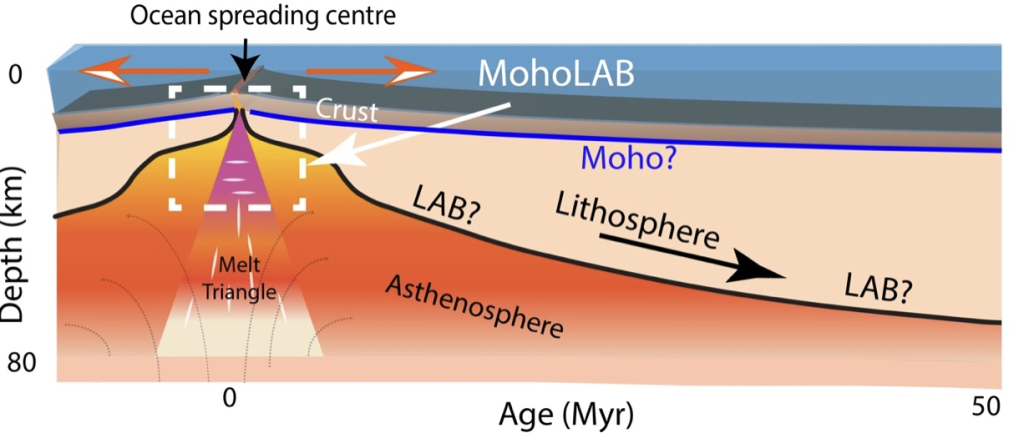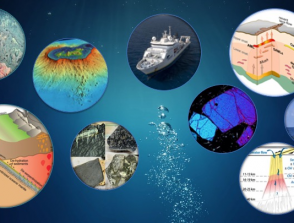ERC – MohoLAB
Start: 01/12/2024 - End: 30/11/2029
European partnership
Coordinators : Satish Singh
Host institutions :
IPGP
Related teams :
Marine Geosciences
Related themes :
Earth and Planetary Interiors
The Mohorovičić discontinuity (Moho), the crust-mantle boundary, separates the Earth’s crust from the underlying mantle. It is a clear manifestation of the chemical differentiation on Earth, representing the change from light silica-rich rocks in the crust to dense ultramafic rocks in the mantle. On the other hand, the Lithosphere-Asthenosphere Boundary (LAB) is a rheological boundary between the floating rigid lithosphere forming the tectonic plates and the weak, deformable, and convecting asthenosphere underneath (Fig. 1).
These two boundaries are first born at ocean spreading centres, where two-thirds of the Earth’s crust and lithosphere are formed (Fig. 1). The Moho (chemical boundary) and LAB (physical boundary) together serve as the location where coupling and exchange take place between the shallow and deep mantle and are what makes the Earth a unique planet within the solar system.
However, how these boundaries are originally formed and how they evolve during the early part of their existence remain a conundrum. Using state-of-the-art seismic technology, the MohoLAB project aims to determine the seismic properties of these boundaries and the structures around them and combine these results with petrology and geodynamical modelling to develop a comprehensive model for their formation and evolution. This project will significantly improve our knowledge of the two major internal boundaries of our planet.

Fig. 1. Schematic diagram showing formation of crust, Moho and lithosphere at ocean spreading centres. The melting of mantle occurs in the melt triangle and the melt migrates to the surface to form the ocean crust. The white dashed box indicates the focus of the MohoLAB project.






